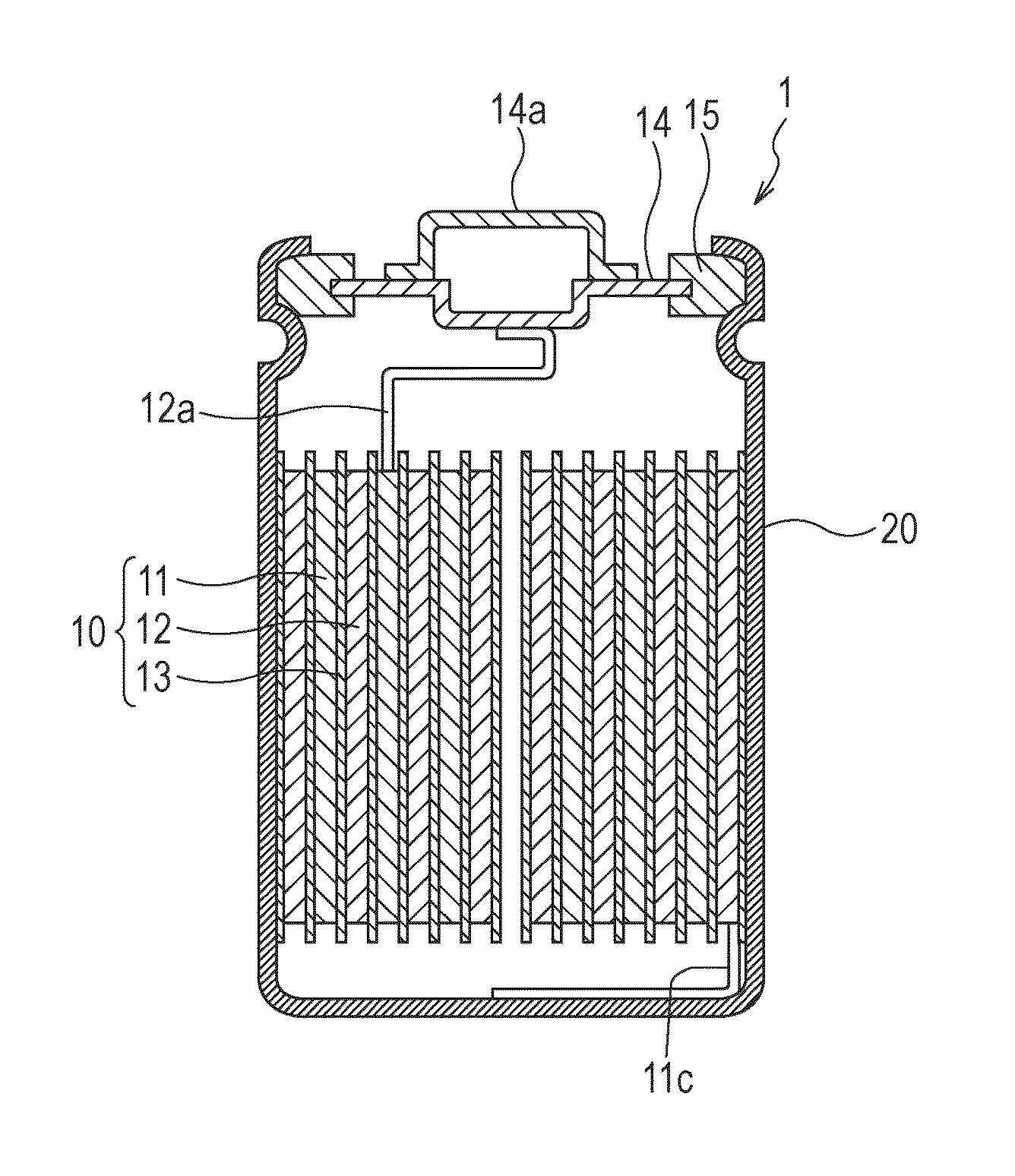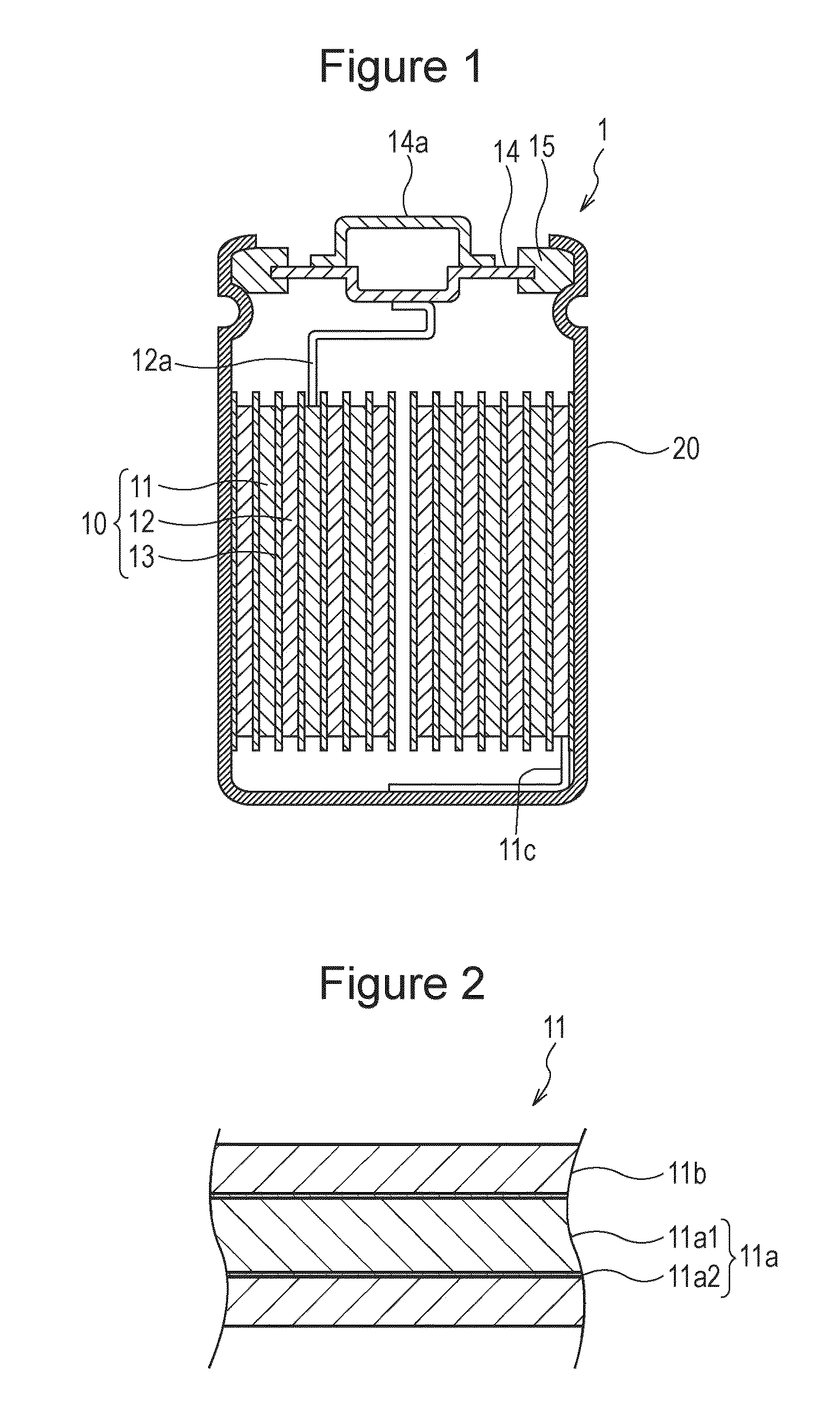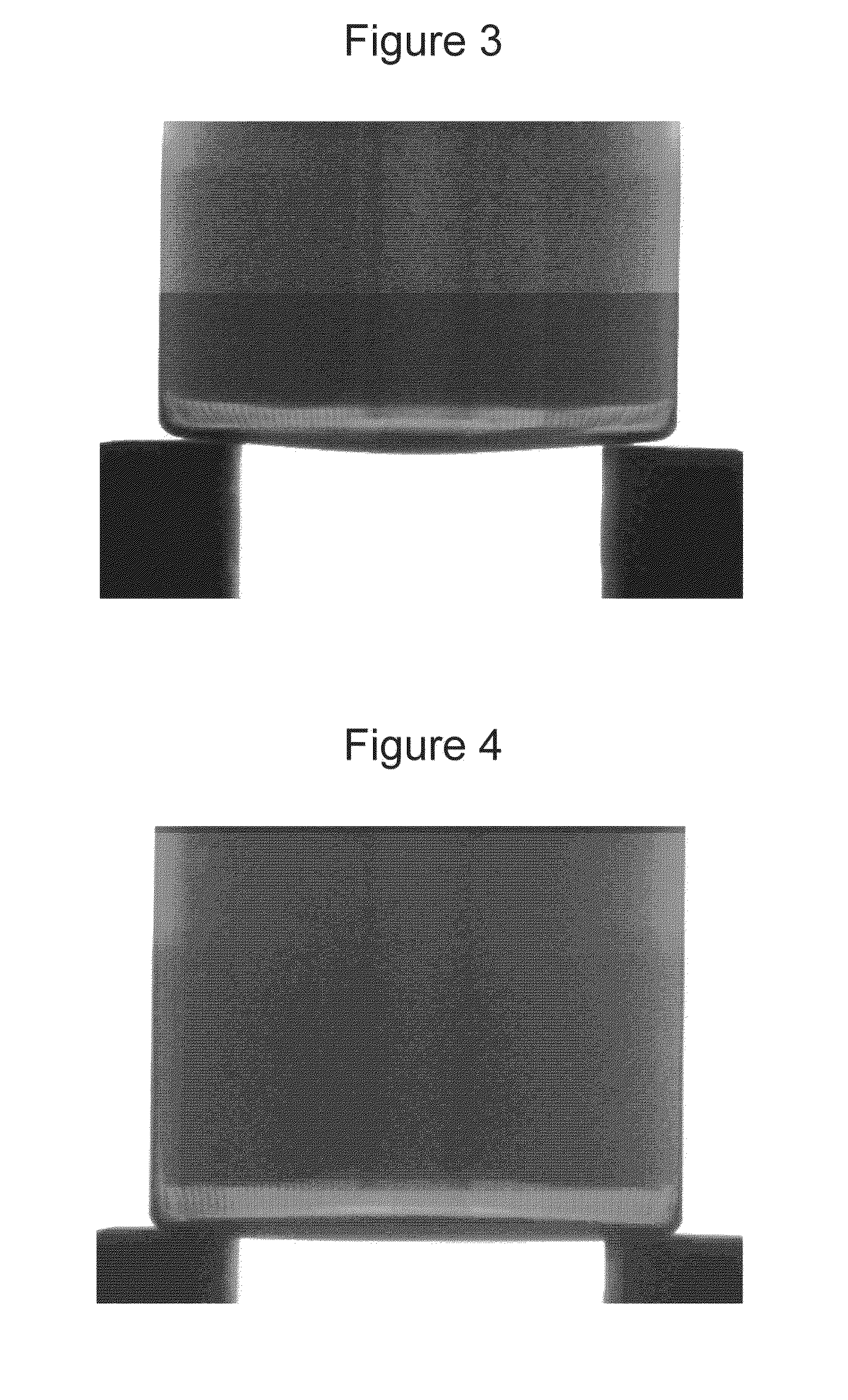Lithium secondary battery
a secondary battery and lithium technology, applied in the direction of wound/folded electrode electrodes, cell components, sustainable manufacturing/processing, etc., can solve the problems of collectors being disadvantageously deformed, changing the volume of negative electrode active materials,
- Summary
- Abstract
- Description
- Claims
- Application Information
AI Technical Summary
Benefits of technology
Problems solved by technology
Method used
Image
Examples
first embodiment
[0023]As shown in FIG. 1, a lithium secondary battery 1 is a cylindrical type secondary battery. The lithium secondary battery 1 includes a spiral-shaped electrode assembly 10 and a battery container 20. Since the battery container 20 has a cylindrical shape, a biasing force of the battery container 20 applied to the electrode assembly 10 in a radius direction is not likely to be concentrated on one portion but is uniformed, and hence, wrinkles and deflections are unlikely to be generated in a negative electrode 11 and a positive electrode 12. That is, when a negative electrode collector 11a is not able to withstand a stress generated in association with the change in volume of a negative electrode active material, the negative electrode 11 is not deformed to have an undulated shape in a thickness direction thereof but tends to extend straight along a direction parallel to the surface of the negative electrode 11. In addition, when the battery container 20 has a shape, such as a fla...
experimental example 1
[0058]By the use of a negative electrode, a positive electrode, a nonaqueous electrolyte, and a cylindrical type battery container formed as described below, a cylindrical lithium secondary battery 1 having a diameter of 18 mm and a height of 65.0 mm was formed.
[0059][Formation of Negative Electrode 11]
[0060]First, a negative electrode active material was formed as described below. A silicon core placed in a reducing furnace was heated to 800° C. by current application, and a mixed gas of a monosilane SiH4 gas and a hydrogen gas, each of which had a high purity, was allowed to flow in the furnace to deposit polycrystalline silicon on the surface of the silicon core, thereby forming a polycrystalline silicon ingot. Next, this polycrystalline silicon ingot was pulverized and classified, so that a negative electrode active material formed of polycrystalline silicon particles having a purity of 99% was obtained. The crystallite size of the negative electrode active material was 32 nm. T...
experimental examples 2 to 14
[0075]Except that the application quantity of the positive electrode mixture slurry, the capacity B to be charged per unit volume of the negative electrode 11, the type, the thickness, and the proof stress of copper foil used for the formation of the negative electrode collector 11a, and the heat treatment temperature were set as shown in Table 1, a lithium secondary battery was formed in a manner similar to that in Experimental Example 1.
[0076]In addition, in Experimental Examples 2 to 4, 8, 10 to 12, and 14, in each of which zirconium copper alloy foil was used as the collector, the content of Cu in the surface of the negative electrode collector 11a was measured by integrating the element from the surface thereof to a depth of 10 nm using an XPS analysis, and the results are shown in Table 1.
[0077][Evaluation]
[0078]The dimension in length of the lithium secondary battery formed in each of Experimental Examples 1 to 14 was measure along the axis direction thereof using a slide gag...
PUM
| Property | Measurement | Unit |
|---|---|---|
| yield elongation rate | aaaaa | aaaaa |
| surface roughness Ra | aaaaa | aaaaa |
| elastic modulus | aaaaa | aaaaa |
Abstract
Description
Claims
Application Information
 Login to View More
Login to View More - R&D
- Intellectual Property
- Life Sciences
- Materials
- Tech Scout
- Unparalleled Data Quality
- Higher Quality Content
- 60% Fewer Hallucinations
Browse by: Latest US Patents, China's latest patents, Technical Efficacy Thesaurus, Application Domain, Technology Topic, Popular Technical Reports.
© 2025 PatSnap. All rights reserved.Legal|Privacy policy|Modern Slavery Act Transparency Statement|Sitemap|About US| Contact US: help@patsnap.com



